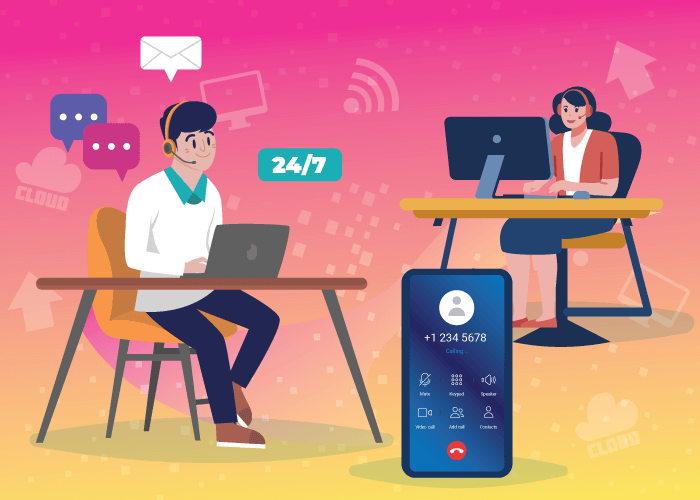No matter which end of business you are on, you may need to learn how to record a phone call. This is significant when you need to remember important information or store important information that can be referred to later. It is not always possible or convenient to type out notes from a phone call. But a recording of that call gives you more time with the material. It also gives you time to review and learn from the quality of that conversation. And so, call recording is becoming an increasingly necessary tool for business communications, even more for companies looking to improve their customer service efforts.
How To Record A Phone Call for Business
You can choose how to record a phone call from a few different methods. But it depends on what type of phone system you have and what type of calls you want to record. For instance, do you want to record incoming calls only or outgoing calls, as well? Additionally, if the quality of the recording is important for your purposes, then you may want a call recording software that is designed specifically for good recordings.
It is important to note that there are federal and state laws regarding recording phone calls. To be careful, always ensure both parties verbally consent to being recorded, so that you don’t run into any trouble. Read the Federal Communications Commission’s (FCC) rules for information about call recording laws.
Call Recording to Boost Customer Care
Many companies, such as call centers and customer service businesses, use call recording to keep track of customer interaction. Recording calls and then reviewing them later can help to identify successes and areas of improvement. For instance, you can use recorded calls to train or monitor employees on what to do and not to do when on a call. Or, you can use recordings to establish customer profiles and preferences. They can be a way to survey your target audience and understand how they are interacting with your product and business.
And so, customer service agencies and large corporations seek call recording software to manage their needs. Sometimes, they opt to work with a phone service provider that lets you record inbound and outbound calls. But the question remains, how to record a phone call without it interrupting your communication experience?
Recording on Your Smartphone
Sometimes, you need to record a call on your Android or iPhone to store important information, especially when you are unable to write down info during the call. For example, certain professions like journalism or reporting would require the interviewer to record the on-going call. And then, refer to it later for exact quotes. Other times, you need the person on the other end to provide verbal consent for a service, and the recording acts as evidence. Either way, recording the call can save you time that would otherwise be spent looking for that information.
Keep in mind, however, Androids and iPhones don’t come with built-in call recording abilities. Although, you can get a recorder app on your smartphone and start recording when you dial a number. Or, you can get a calling app with a built-in recorder. These can record calls and help you manage, share, and store them, as well. Another option is to buy cheap hardware or a recording gadget and plug it into your phone.
However, there are some shortcomings in recording apps that may impede your business’ communications. For example, apps may be able to record either incoming or outgoing calls, but not both. Or, they may be able to record calls made to your personal phone only, making it difficult to access all recordings in one consolidated space. For these purposes, you may want to consider a call recording software or a phone service provider that offers recording capabilities.
Record Calls with Global Call Forwarding
Imagine this: a phone service that lets you record inbound and outbound calls, record calls from anywhere, and on any device. When you purchase a virtual telephone number from Global Call Forwarding, you can also make use of its call recording feature. This feature lets you record calls from all virtual lines associated with your account. It also stores recordings as MP3 files in the control panel. This makes it easy to access all recordings in one place and play them back as needed.
And, now, with Global Call Forwarding’s new feature Outbound Call Recording, businesses can record outgoing calls as well. And then use these recordings to monitor performance, avoid liabilities, and more. But more importantly, you do not need any additional equipment or set up for this to work efficiently. All you need to do is access your control panel on your device and make or answer calls.
Improve Customer Interaction and Build Better Relations
Now that you know how to record a phone call, it is just a matter of choosing which way, app, or software to go ahead with. You can improve the way you correspond with important clients and keep records of conversations that may be needed later. And, you can increase employee productivity by rewarding desired behaviors and training ones that need improvement. Recording phone calls can be beneficial to the overall functioning of a business. Call Global Call Forwarding today to see how we can help you with your call recording needs.








